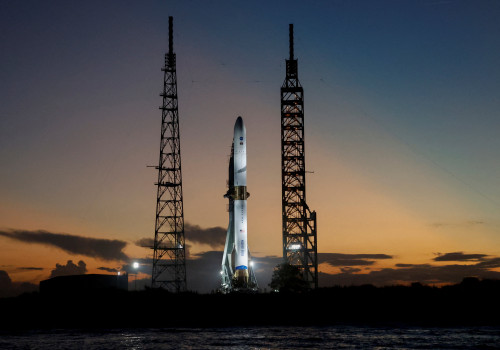Mining companies have been an integral part of the global economy for centuries. The process of extracting valuable minerals or other geological materials from the Earth has shaped civilizations and continues to drive economic growth. We will focus on some of the most profitable publicly listed mining companies globally, examining their business models, the commodities they extract, and the factors contributing to their profitability.
[AD] IRS Loophole Allows ANYONE to Collect up to $28,544 Before June 13
BHP Group
BHP Group, formerly known as BHP Billiton, is an Anglo-Australian multinational mining, metals, and petroleum company, considered one of the largest and most profitable in the world. BHP Group’s profitability is driven by its diverse portfolio of assets, ranging from iron ore, petroleum, copper, and coal. These assets are strategically located across several key geographic regions, including Australia, North America, and South America, providing the company with robust and diversified revenue streams.
Iron ore has consistently been BHP’s primary money-maker, thanks to the high global demand, primarily driven by China’s vast infrastructure projects. The growing global need for clean energy sources also sees copper becoming an increasingly valuable commodity in BHP’s portfolio, with the metal being essential for electric vehicles and renewable energy technologies.
BHP Group’s robust corporate structure, skilled workforce, innovative extraction methods, and commitment to sustainability practices also play a key role in its profitability. The company continuously invests in technological innovations to reduce costs and improve efficiency.
[AD] Trade One Stock, One Time a Week, Make 63% Gains. More here >
Rio Tinto
Next on the list is Rio Tinto, another Anglo-Australian multinational. It’s one of the world’s largest metals and mining corporations, known for its extensive operations in a range of commodities including iron ore, aluminum, copper, diamonds, and minerals.
Similar to BHP, Rio Tinto’s iron ore operations contribute significantly to its profitability. The company operates some of the world’s largest and lowest-cost iron ore mines, particularly in the Pilbara region of Western Australia. The rise of electric vehicles and renewable energy technologies has also increased global copper demand, further boosting Rio Tinto’s revenue.
Rio Tinto’s commitment to innovation and sustainability has made it a profitable and resilient player in the mining industry. The company has made strides in automating its mining operations, which has led to increased productivity and reduced costs.
Glencore
Glencore PLC is an Anglo-Swiss multinational commodity trading and mining company. It operates over 150 mining and metallurgical sites, oil production assets, and agricultural facilities worldwide.
Glencore’s portfolio is diverse, including copper, zinc, nickel, ferroalloys, aluminum, and iron ore. It also operates in the energy sector, mining thermal coal, and producing oil and gas. This broad diversification helps Glencore spread its risk and sustain profitability even when individual commodity prices fluctuate.
Glencore’s trading business also sets it apart from its peers, providing the company with a stable revenue stream that complements its mining operations. The trading arm leverages its global logistics network and market knowledge to buy, sell, and deliver commodities efficiently around the world, contributing significantly to its profitability.
Vale
Vale S.A., based in Brazil, is one of the largest mining companies in the world and the largest producer of iron ore and nickel. The profitability of Vale comes from its large-scale, high-quality iron ore operations, particularly in the Carajás and Serra Leste mines in the Pará region of Brazil, which are among the world’s richest iron ore mines.
Nickel is another vital component of Vale’s business model, used primarily in stainless steel and other alloys, with growing demand in the electric vehicle battery sector. Vale’s Canadian operations are especially important in this regard, as the company has extensive nickel reserves in the region.
Vale has been focusing on enhancing operational efficiency and reducing costs to boost its profitability. It’s also investing in renewable energy projects and aims to use 100% renewable energy in its operations, aligning with global sustainability trends.
Anglo American
Anglo American PLC is a British multinational mining company, operating across several continents with significant operations in southern Africa. It mines a diverse set of commodities, including diamonds (through De Beers), copper, platinum group metals, iron ore, coal, and nickel.
The company’s profitability stems from its focus on large-scale, low-cost, long-life operations and its continuous effort to optimize performance across its diverse portfolio. Particularly noteworthy is its platinum group metals business, which benefits from robust global demand due to their use in various industrial applications, including catalytic converters in vehicles and electronics.
Anglo American’s innovative FutureSmart Mining program, which focuses on sustainable mining and digitalization, also plays a key role in enhancing profitability. The company is looking to transform the way it mines, targeting waterless, carbon-neutral mines to reduce environmental impact and costs.
In conclusion, these five mining companies represent some of the most profitable players in the industry, with robust business models, diversified portfolios, and a focus on innovation and sustainability. It’s important to note that while they are currently profitable, the volatile nature of commodity prices, operational risks, and increasing global pressure for environmentally friendly practices can significantly affect their future profitability. However, their commitment to innovation, strategic planning, and sustainable practices makes them well-positioned to navigate these challenges and remain profitable in the long run.





